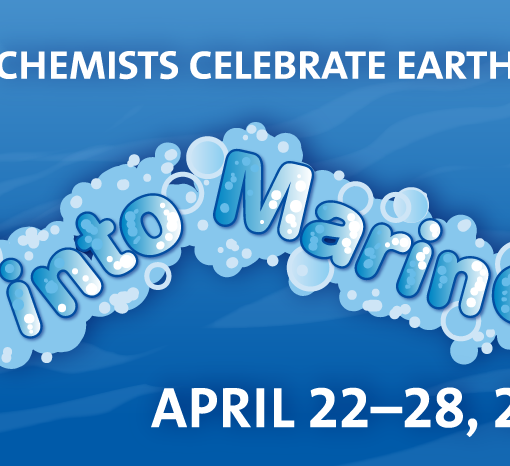Mark Twain had a few choice words about learning that I love. “Don’t let your school get in the way of your education.” As a former teacher but lifelong learner, I’ve come to believe that learning is best done outside the classroom. I viewed my teaching jobs as transforming how people think, not what they think. Most if not all of my lectures were marbled with personal experiences and common occurrences. I focused on how our everyday lives relate to chemistry.
Looking back – and sort of daydreaming – I truly regret not having the time or resources to give my students a better handle on everyday chemistry. I wanted them to get their hands dirty, tear things apart, and reconstruct them. In reality, I had demands for a set curriculum to be package-delivered en masse so students could acquire specific information in a single semester. All the time, I wondered what they would do with this information.
Additionally, I felt pressure to push as much content as possible. I had to gloss over or entirely omit context, leaving students grasping for interest and relevance. My heart says let’s see how we use alloys in jewelry, cars, and other products. But my syllabus says we don’t have time for useful information today. How will this force-fed approach help a person land a job or be successful? As teachers and school leaders, have we failed our students?
Over 90% of employers in a recent survey reported that a student’s college major takes a back seat to critical thinking and problem-solving skills. Through the Harvard Business Review, Dr. Michelle Weise, senior research fellow at the Clayton Christensen Institute, adds that “something is clearly wrong when only 11% of business leaders — compared to 96% of chief academic officers — believe that graduates have the requisite skills for the workforce.”
Despite this, colleges have been reluctant to change their undergraduate programs to suit employers’ needs until recently. Last year, over 350 institutions offered competency-based education (CBE). These programs allow students to progress once certain skills as well as academic content have been mastered regardless of time. No two institutions are the same in their approach to competency-based learning, but most feature a combination of in- and out-of-classroom learning opportunities. These are the type of opportunities that I wished I could have provided my students.
Recent programs have been established at the University of Michigan, Purdue University, and the University of Wisconsin. At UM, master’s students in health professions education choose activities directed at their professional development. Here is more extensive list, which includes developing research proposals and critiquing research manuscripts, among others. Student projects, fieldwork, and team-based collaborative work offer students a breath of job-relevant, fresh air as compared with the stale, powerpoint lecture.
More importantly, major companies are paying attention. They are partnering with academic institutions to ensure skillset development. College for America offers case studies for perusing their successful business partnerships with Holiday Inn, Anthem, and McDonalds to name a few. Northern Arizona University partnered with Pearson to provide their version of competency-based learning. These online learning initiatives are backed by a $1 million grant from the Gates Foundation.
A key benefit for both the employer and the employee is money. Employers can maintain their workers while they attend college. Students can afford college with tuition from $1,250 – 4,500 for a six-month term (depending on the school) and work at their own pace. Another benefit is time. Some students actually work harder to complete the degree faster. Highlighted in a US News and World Report article is Tyler Harris, a student at Western Governors University. It would have taken him 5 years and $30,000 to finish 120 credit hours at WGU. He will complete his bachelor’s degree in information technology in just 18 months for roughly $9,000.
Not surprisingly, the academic world has a real problem with restricting education to knowledge for a specific purpose only. And I see their point: without a broad base of knowledge, it’s hard to push the boundaries of it. However, if workers cannot apply their education to a real world problem, businesses cannot thrive. Currently, academia is best at producing more academics, not business leaders. This is a fundamental problem that CBE addresses.
Jamie Merisotis, president and chief executive of the Lumina Foundation which supports CBE approaches, summarizes this educational approach. “Competency is a student-centered, learning-outcome-based model. Where you get the education is secondary to what you know and are able to do.”
Perhaps both sides don’t have all the right answers. Pure knowledge clearly isn’t enough to survive in today’s world, but neither is pure skills development with no knowledge backing it up. Academia is going to have to evolve to face the needs of their students. The private sector is going to have to help them get there. Both sides must work together if we are ever going to find a path forward.
Cover photo credit: ceratosaur / CC BY-SA 2.0





One thought on “Knowledge and Skillsets”
I have an issue with the idea that High School or college should be a training ground for future employees of businesses. School is supposed to teach you how to think for yourself and expose the individual to many different ideas, subjects and people. It should teach critical thinking and how to present and defend a position.
It appears that business leaders today don’t want to spend time training their employees to do their jobs because of the fact that such training costs money and eats into the profit margin. Businesses are pressuring colleges and school systems to teach students skills that apply to the workforce, so that they don’t have to. The complaint that the students aren’t ready for the workforce is their way of pressuring the schools.
When I was in college as a biochem major, the focus was on the theory of chemistry, and you did labs that demonstrated those theories. There were no courses in grant writing or how to do the day to day things that one would do in industry. Those skills were taught “on the job”. Why should academia now be pressured to provide this “on the job” training before students are even employed? I fear this view of schooling has already started colleges down the path toward vocational training grounds instead of institutions of higher learning.